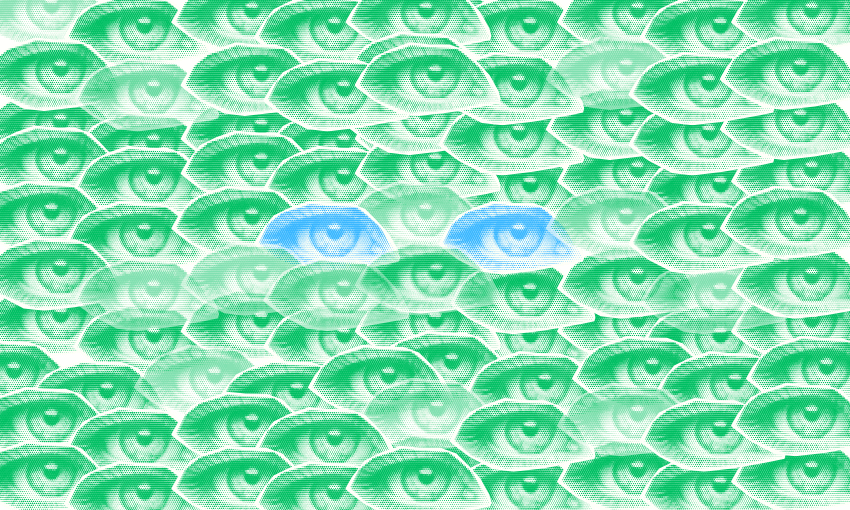A personal essay following the cuts to science programmes around the country.
My younger son has blue eyes. Bright, sky blue. A penetrating shade: stunning, clear.
He wants to know why. “Why are my eyes different from everyone else in the family? Why don’t I have green eyes, too?” There are two possibilities; two hypotheses (my older son is learning the word; he likes the sound of it, the length, the constant uncertainty over the number of e’s and s’s).
The first hypothesis is an IVF mix up. The second is a recessive allele.
We have no evidence to support the first. (And it sounds like the beginning scene in a Jodi Picoult novel.)
We begin our search for evidence to support the second. We do a punnet square to show my son how genes move through generations, reforming. He had a grandfather with blue eyes. A great-grandmother. Blue-eyed genes on both sides, buried in time.
Where did the blue in my grandfather’s eyes come from? He wants to know. In my great-grandmother’s eyes? Were they the only ones with blue eyes in their families? And before that? And before that?
How far back does time go?
How do you explain the concept of evolutionary time to a child? The sheer volume of it. The bottomlessness. It’s too big. Too vast. Too deep.
I remember a lecture theatre at university. Geology. Around the perimeter of the room was a string that ran up and down from floor to ceiling. Up and down. Up and down. All the way around the room. It was a big room. The length represented the Hadean era to the present; 4.6 billion years. Geological time intervals were marked with tiny shells. A fan shell marked the beginning of the Cambrian Period of the Phanerozoic Era.
I remember walking around the room, running my hand along the string. I wanted to feel it, the length of time. I was 19. I had never felt so present, so part of something; and at the same time so painfully, utterly irrelevant.
At the zoo my sons and I watch the chimpanzees. They have a big outside enclosure and a glass-sided inside space with lots of ropes. My sons like to stand right up against the glass, faces pressed against it. They watch a baby chimpanzee swinging on the ropes. They, too, want to swing on the ropes; I can see their feet and hands twitching in anticipation, following the movement of the baby chimp. My older son taps on the glass, as if attempting to break the barrier. The baby chimp swings up close to the glass, holding her hand aloft, fingers unravelled, as if waving. An almost jeering gesture, human in its complexity.
“I wish we could play with them,” says my younger son.
I peel mandarins and my sons eat them, segment by segment. On the other side of the glass the chimpanzees are eating bananas and apples. Morning tea at the zoo.
“So we came from the chimpanzees?” my older son asks.
“No, not quite, we had a common ancestor.”
They look at me blankly.
“We diverged from a common ancestor around five to 13 million years ago,” I tell them. “But we don’t know for sure when it happened.”
“Why not?”
“Because the fossil evidence is not conclusive.”
“Why not?”
“Because it was a long time ago. And there was lots of gene flow back and forth. We are talking about tiny changes over a very long time.”
They finish their mandarins, flicking the pips between their fingers. On the other side of the glass the baby chimp throws an apple core in the air. She catches it. Something like a grin. She eyes my older son, he eyes her back. She throws the apple core at the glass. Whack!
“Missed me!” he shouts.
We move on quickly. The adult chimpanzees are having sex over in the caves. My younger son has noticed this. I can see a question brewing. I don’t have the answer.
My sons’ grandfather would have been 90. My partner describes him to us: full of laughter, hard-working, those blue eyes. My grandmother also had a birthday in February. She would have been 110. I remember her smallness, her quick wit, that she always ate exactly 12 chips from the fish and chip bundle, those blue eyes.
Time rises and rises. Until it reaches the level of your eyes. And then you drown.
We show our children pictures. We talk about their ancestors. The people who went before. We map out lives in years, decades. We talk about the music they listened to, the movies they watched, the moments in history they lived through – the sinking of the Wahine, World War Two, the 1984 Springbok tour. A whole life. Yet such a tiny fraction of evolutionary time. Not even a millimetre on the evolutionary string.
“So that’s where my blue eyes come from,” says my younger son. He folds his hands, one over the other. Conclusive.
“Actually,” says his brother, “it was an IVF mix up. We don’t know who your real parents are.”
I don’t know if the geology lecture theatre with its string of time still exists. With the ongoing axing of courses at universities around New Zealand, where the sciences land in the future remains uncertain.
I hope we have the foresight to retain the teachers in our institutions so that our kids can learn these subjects. To keep the sciences as an option. To save us from drowning.
I still remember that feeling of learning about science at university. The power of it. The wonder. Truly conceptualising evolution for the first time.
I remember that feeling of running my hand over the length of string. The simultaneous feeling of insignificance and significance. The grit of it, right there, underneath my fingertips.

